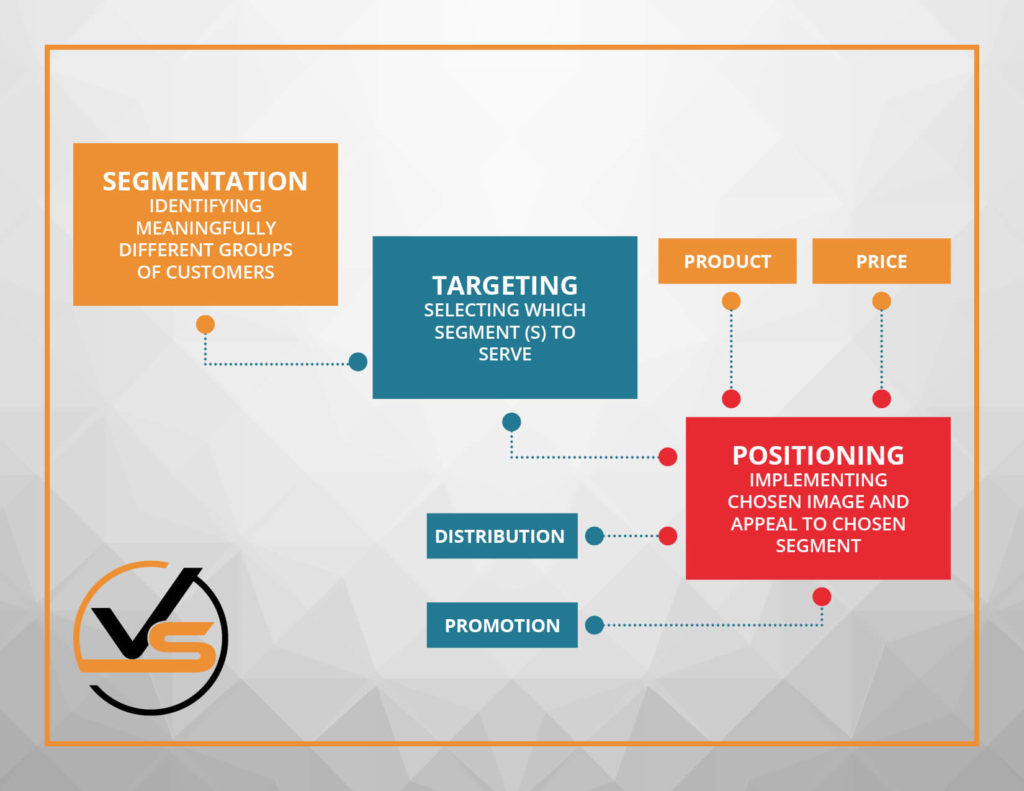
Market Positioning – Part 1: How Do Your Customers Perceive You?
It’s you vs. your biggest competitor in a fierce battle to win over your customers’ minds. Your weapon is your positioning sword, and whoever has the sharpest, most powerful sword will come out victorious in the end.
Are you confident you will be the victor?
Wait…do you even have a positioning sword?
If you aren’t positioning your company effectively, well, there isn’t much of a battle here. You might as well turn around and go home—that is, if your competitor doesn’t slay you first.
If you want to gain a competitive advantage and get your brand message into the hearts and minds of your customers, you have to get into the trenches and position yourself effectively.
Let’s talk about positioning…
Now we realize that positioning is not exactly a glamorous topic to learn about nor something you want to talk about at your next neighborhood BBQ.

“Hey, have you created that multidimensional perceptual map yet? I wanted to see how well our competitors’ product attributes compare to ours so we can identify a market gap… Oh, and can you hand me the mustard?”
But regardless of whether or not positioning becomes the next hot topic at your summer soiree, it’s still essential for business growth.
If you have been following our crash course in marketing series (if not, how come?), you will know that we took a deep dive into the critical tactics businesses need to leverage to remain competitive, relevant, and desirable to their customers.
We started talking about market orientation and market research, which are 2 essential components to developing a long-term, rock-solid marketing strategy. Next, we talked about segmentation and targeting and how the 2 unite to help you laser focus on the exact people who will open their wallets and buy from you.
If you are unfamiliar with one or more of these concepts, revisit those links and then come back here to learn about the next critical step of this process, positioning.
Once you know which segment you want to target, it's time to position yourself to that segment.
You’ve got your segment, check.
You know what segment you want to target, check.
Now what?
What Is Market Positioning and Why Do You Need it?
In this recent article, we introduced the STP marketing framework, or Segmenting, Targeting, and Positioning. We discussed segmentation and targeting in detail, and now we want to bring in the third step of this process, positioning…
Here is the STP diagram:

As a review, segmentation is similar to compiling a map. This map is a tool that provides direction on where you want to go (identifying market segments).
Targeting is mapping the journey you will take (selecting viable segments to target and devising strategy).
Positioning is actually taking the journey (appealing to your chosen segment and figuring out how to create the right product/brand image in your consumer’s mind).
Positioning involves figuring out how you want to be perceived by your chosen segment and what attributes you want your market to focus on.
- What does your customer segment think of when they see/experience your brand?
- How do you want your brand to be perceived?
- What product/price attributes are important to position yourself?
These are the questions you need to answer to be able to position yourself effectively.
Positioning also involves identifying the competitor that is also targeting your segment and positioning yourself against them by differentiating and contrasting your product with theirs.
Positioning Defined
If you are still having a difficult time understanding what positioning is, you may have come across these phrases:
- Brand purpose
- Brand values
- Unique value proposition
- Core attributes
- Core values
- Brand essence
- Brand DNA
- Brand promise
- Brand personality
Positioning essentially means the same as these terms, even though they are described in a different way.
If you segmented your market right and you know which segment to target, your positioning will be targeting a tight group of people who have similar characteristics and desires. Your segment will also reveal 1 or 2 main competitors you will be positioning against. The next step is to create messaging that differentiates yourself from your competition.
You can call this a brand purpose, brand promise, brand DNA, whatever you want. At the end of the day, you are still talking about positioning.
What Is the Ultimate Goal of Market Positioning?
The key to successful positioning is to create a campaign where you position your brand in such a way that your target segment thinks specific things (you want them to) when they consider your brand.
So what you are essentially doing is creating messaging that positions your brand a certain way in your customers’ minds, exactly how you want it to be perceived.
What does positioning look like in the real world? Let’s take Walmart as an example of positioning gone wrong—and then right again.
Walmart positions WRONG, but then redeems itself
When you think of Walmart, where does your mind typically go? I would imagine you are thinking rock-bottom prices, and that’s because the brand has been using this messaging for decades to position itself as the leader to this segment.
But, lo and behold, the low-price retailer decided it wanted to elevate its status and raise its clientele by selling higher-priced goods. Unfortunately, due to Walmart’s strong positioning, selling goods at a higher price point to its existing audience turned into an epic failure.
To target higher-income earners, Walmart ran an ad campaign in Vogue that promoted its high-end wine. Walmart next to a Dolce Gabbana ad? It was laughable. And as you can imagine, the ad tanked, along with the sales from this campaign.
The people who would be interested in buying high-priced products were not the same people shopping in their stores. Walmart’s aisles would never be filled with high-income earners, as Walmart’s positioning was never designed to satisfy this consumer segment.
Realizing how strong its positioning was, Walmart decided to change its positioning and revise its slogan to appeal to a different consumer emotion.
Its original slogan, “low prices always,” mentioned a benefit but did nothing to evoke customer emotion. Walmart wanted to connect with customers and give them a feeling of how shopping at Walmart could make their lives better.
So Walmart changed its slogan to “save money, live better.”
The purpose behind this slogan was to show consumers how saving money would result in living a better life and to paint a picture of what customers could do with all of the money they saved by shopping at Walmart.
What they could do is take a road trip to Disney as seen in the ad behind their newest campaign.
The moral of the Walmart story?
Walmart was able to rectify its failed positioning with a deeper look into its target and an emphasis on finding a deeper benefit than just “low prices.”
Walmart realized that patrons were not just shopping to save money; they were shopping to keep enough money in their bank accounts to live the life they wanted.
If you want to learn more about positioning, the concept was introduced by Al Reis and Jack Trout in their book Positioning: The Battle for Your Mind.
Creating a Positioning Strategy/Statement: The 3 Cs of Successful Positioning
Once you know the segments you are targeting, the next step is to develop a positioning strategy that will culminate in creating a positioning statement (more on that later).
To do this, consider the 3 Cs: customer, competition, and company.
While all 3 can be applied to multiple marketing approaches, we will show you how to apply these principles to position yourself effectively to your chosen segment.
Customer
To position your company effectively in the minds of your customers, your main goal is to speak directly to their goals, challenges, and values—find out what it is that makes them tick.
Before we continue, let’s get one thing straight…
Your customers are not really buying your product; they are buying a better life experience and answers to their problems. With every product consumers buy, they are either solving a problem or trying to make their life better—sometimes both.
Refer back to the Walmart example. When the superstore thought about the deeper need of its customers (living a better life), it was able to successfully reposition its brand and increase sales.
Let’s look at another hypothetical example…
When you buy or open a tub of rocky road ice cream, are you doing it just because buying ice cream was on your shopping list? Most likely, you are actually buying…
- Feelings of relief after a nasty breakup
- A reprieve after a long, hard day at work
- A refreshing escape from the summer heat
You must understand what turns your customers on and satisfies the deep need that your product can meet.
If you are unclear as to whom your target market is and what their problems are, you may need to go back and do some market research to more properly define a segment.
Competition
Once you nail down your customer, move to identifying your competition.
As we mentioned before, customer satisfaction is but one component of effective positioning. Positioning also entails defining the competitor/s who are also targeting your segment and positioning yourself against them to differentiate yourself in the minds of your customers.
The first step here is to define who your competition is.
Instead of trying to figure this out on your own (it’s best if you don’t), during your market research, poll your segment to find out who they think your competitor is. Your target market will tell you exactly what you want to know, and it's best to hear from them anyway instead of relying on your gut feelings or instincts.
One of the most important components of marketing strategy is to never think that you actually know what your customers want—ever. Relying on data instead of hunches is called market orientation, and it is critical to successful marketing.
One last thing to note here is that your competition may change once you target a new segment. This is because the people in each segment will espouse distinct goals and values—that is, if you segmented properly.
Company
Once you define your customer and your competition, the last step in creating your positioning strategy is to take a look at how/if your company can deliver on your brand promises.
This will be an important step as you craft your positioning statement. A positioning statement compiles your target audience, competition, and brand promise into one statement that defines your core message, who you are sharing it with, and how it is different than your competition.
But, before you finalize this, make sure your company can deliver on the promise in your statement. Your brand promise will extend from your company positioning, as the 2 are closely linked.
The positioning is the messaging and strategy you use to formulate in your customers’ minds how you want to be perceived in your market. But, the brand promise is the actual fulfillment of your positioning—the benefit that makes your product different than the competition and desirable to your customers.
If you don’t deliver on your brand promise, your positioning is irrelevant and you will risk damaging your reputation.
At this stage, you should have a brand promise your company can deliver that speaks directly to the customer and differentiates from your competition.
If you can't deliver on this or find a position statement that ticks the boxes of all 3 Cs (customer, competition, company), go back and find another segment to target.
This 3 Cs exercise can help you determine whether it makes sense to position to a particular segment. You can have great segmentation and a worthwhile target, but if you find your competition is too fierce in a segment, you may need to go back and target another.
When all 3 Cs align, you know you have a winner and are ready to proceed.
The Next Steps to Market Positioning
Hopefully, by now you have a good foundation on what positioning is and how you can start or improve your positioning based on what you learned.
In part 2 of this 2-part series on positioning, we will dive deeper into how to position your company by taking a look at perceptual maps and helping you further articulate your positioning. We will see you there!

